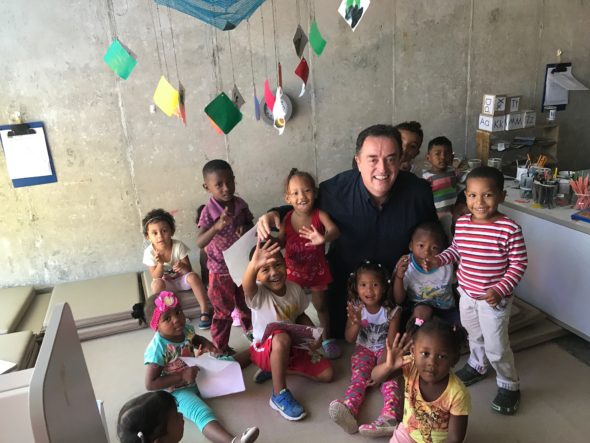 To make the most of your dental education, collaborating with community outreach opportunities is essential. Get out of your comfort zone to learn about issues impacting your communities while gaining clinical and inter-professional skills.
To make the most of your dental education, collaborating with community outreach opportunities is essential. Get out of your comfort zone to learn about issues impacting your communities while gaining clinical and inter-professional skills.
There are tremendous oral health disparities in the US. Early Childhood Caries (ECC) is the most common chronic childhood disease, being five times more common than asthma. [1] Research shows that approximately one in four children aged 3-5 and 6-9 living in poverty in the U.S. have untreated dental caries. [2] Untreated caries is nearly twice as high for Hispanic children compared with non-Hispanic white children aged 6-9 years. Fortunately, there are many oral health initiatives that focus on improving the status of ECC in the U.S.
An example of a successful U.S. outreach program is the Access to Baby and Child Dentistry (ABCD) program. The goal was to increase the number of children under 5, who visit the dentist through educational initiatives for parents and dental professionals. [3]
There are many ways dental students can become involved in community outreach.
Here are 6 easy ways dental students to get started:
- Reach out to faculty members conducting research or programs in the community. A meeting with faculty will allow students to learn about exciting opportunities happening on and off campus.
- Contact local community health clinics for dental volunteer positions. FQHCs/Local community health clinics provide many resources for underserved communities.
- Connect underserved community members to a dental home. Visit local pre-schools, high schools, or other community centers for opportunities to provide information on how to schedule an appointment at local dental clinics.
- Brush up on your languages. As dental providers, communicating with your patient is important. Learning key phrases in the language of your community will help patients understand and communicate with you.
- Get familiar with your dental school clinic’s appointment protocols. Learning about your institutions’ appointment procedures can help patients receive dental treatment faster.
- Ask your dental school administration to open and establish opportunities with your local community health centers, be an advocate of community collaboration.
There are vast opportunities and support that offer students experience to acquire useful skills to use throughout their professional career. We need to take care of the dental needs of our community first!
Your time at dental school goes by fast, so make the most of your incredible opportunity connect with your community partners now!
~ Francisco Ramos-Gomez DDS, MS, MPH, Professor of Section of Pediatric Dentistry, UCLA
No comments:
Post a Comment